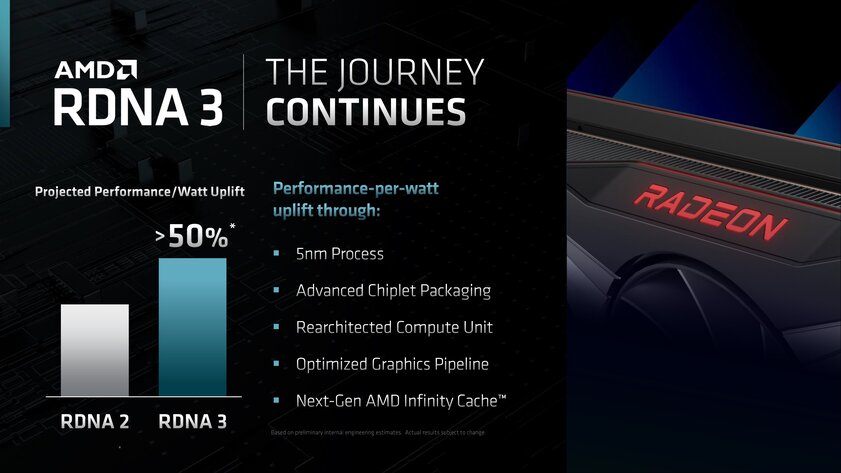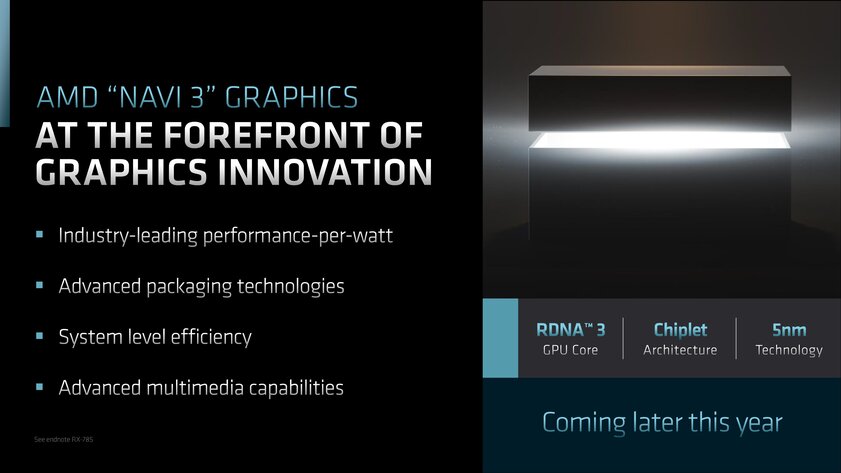Today, August 30, AMD officially introduced its Ryzen 7000 processors, but in addition, the presentation also announced the line of Radeon RX 7000 video cards based on the RDNA 3 architecture. Unfortunately, this is not a full-fledged presentation of the next generation of video cards, but just a small announcement, but, on the other hand, even a short teaser gave enough food for thought. During the event, you could even catch a glimpse of the design of the new reference model from the new line – it is likely that the new video cards of the “red team” will look almost the same as the current generation.
Judging by the image of the new video card, the upcoming generation on the RDNA 3 architecture will be noticeably thicker than the current video cards (the video card will probably occupy three slots, like the NVIDIA RTX 30 in most versions) due to an impressive heatsink, plus there is some hint of RGB lighting on front of the cooling system cover. Unfortunately, fans of the company will only be able to find out all the details towards the end of this year – during the announcement, AMD representatives said that graphics chips based on the RDNA 3 architecture will be presented in 2022, and the release is scheduled for early 2023. And although no one gave exact numbers, performance data appeared.

David Wang, senior vice president of Radeon Technologies Group, which is responsible for the development of graphics chips, said that next-generation GPUs based on the RDNA 3 architecture boast a performance increase of more than 50% (taking into account the performance per watt) compared to the current generation based on RDNA 2. Also, graphics chips based on RDNA 3 will be produced using a 5 nm process technology, which will make them more energy efficient, the chipset packaging has been significantly improved, the compute unit has also been updated and will now use the new AMD Infinity Cache. generations.

Unfortunately, no tests, data from benchmarks or video games were shown at the presentation. Accordingly, there are only rumors from insiders that the AMD Navi 31 GPU, which is the flagship on RDNA 3, will receive a 384-bit bus, 12,288 compute units in the new workgroup, and 192 MB of AMD’s new Infinity Cache. And although TSMC will produce all this on the latest equipment and technological node, insiders report a significant increase in TDP – we are talking about 300-400 W in normal mode without increased loads. However, NVIDIA RTX 40 has a similar situation, so this is more of a market norm than an exception.
AMD promised to provide more information at the presentation before the end of this year.
Source: Trash Box
Donald-43Westbrook, a distinguished contributor at worldstockmarket, is celebrated for his exceptional prowess in article writing. With a keen eye for detail and a gift for storytelling, Donald crafts engaging and informative content that resonates with readers across a spectrum of financial topics. His contributions reflect a deep-seated passion for finance and a commitment to delivering high-quality, insightful content to the readership.







